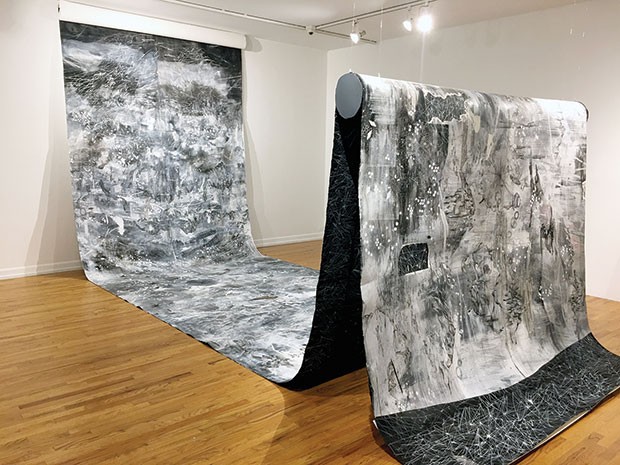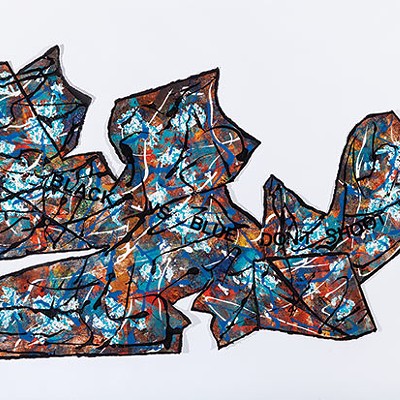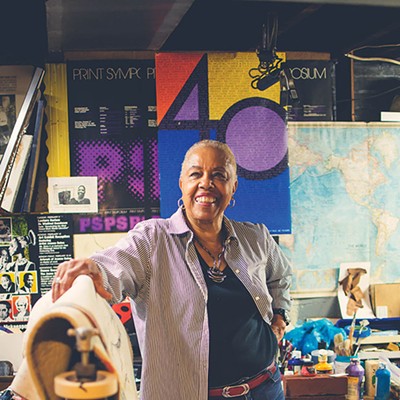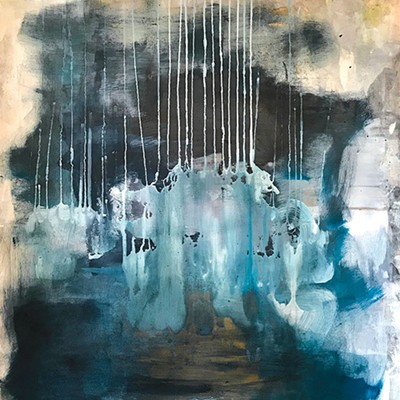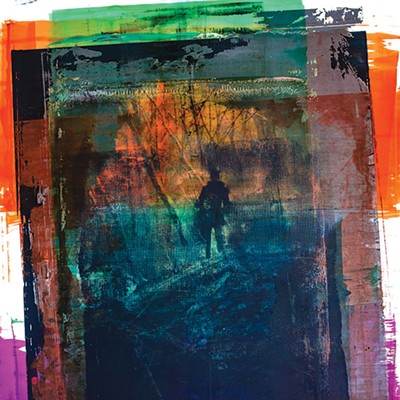Our ability to journey as humans is not only physical, but intellectual. In Amy Schissel’s New World Order: OS, at Pittsburgh Center for the Arts, the artist explores the relationship between the crossings we take with our bodies and those we take with our minds, and the network of trajectories, routes, connections and intersections between the two.
Over the past century, the way we move through space as tangible beings was drastically and permanently changed by the invention of new and novel methods of transportation, permitting entrance to regions previously inaccessible to most. What had been an impossible fantasy before planes, trains and automobiles has been downgraded to mundane reality. This century, the same is happening with our intellectual selves through the availability of the sights and sounds of almost anything and everything at our fingertips, from virtually anywhere we may be.
What this translates to artistically for the locally based Schissel is a captivating web of scratchily spidery lines and rigidly symmetrical circles, inked with commitment onto vast swathes of material; round sections cut of spheres that mimic the moon in shape and landscape, larger than we see it in the sky; pitch-black skies through which lasers of white streak, taking over entire walls. Sometimes these sprawl off the walls to curl and fluctuate from floor to ceiling to dominate its chamber, leaving only a narrow pathway to navigate past, from which to imagine our navigation within. There is not a lot of room remaining within these calculations for us.
Which may in fact be the entire point. We have mapped and diagrammed, fixed and linked, transversed and transected over and over and over again to the extent that there is little space remaining not accounted for, designated and occupied. We have left nothing uncharted. We’ve hit every mark. There’s nowhere for another trail to be blazed …
… possibly. One potential future leads to Schissel’s atlas jam-packed with circuits, courses, one-ways, round-trips. These treks into space seem to leave no space remaining. However, if one looks, there are pockets of quiet — one small oasis of stillness here, another tiny refuge of calm there. And in observing the chaos of intended motion, these are what we find, where our eyes are drawn, without our even trying. One possible future is not the only possibility.

